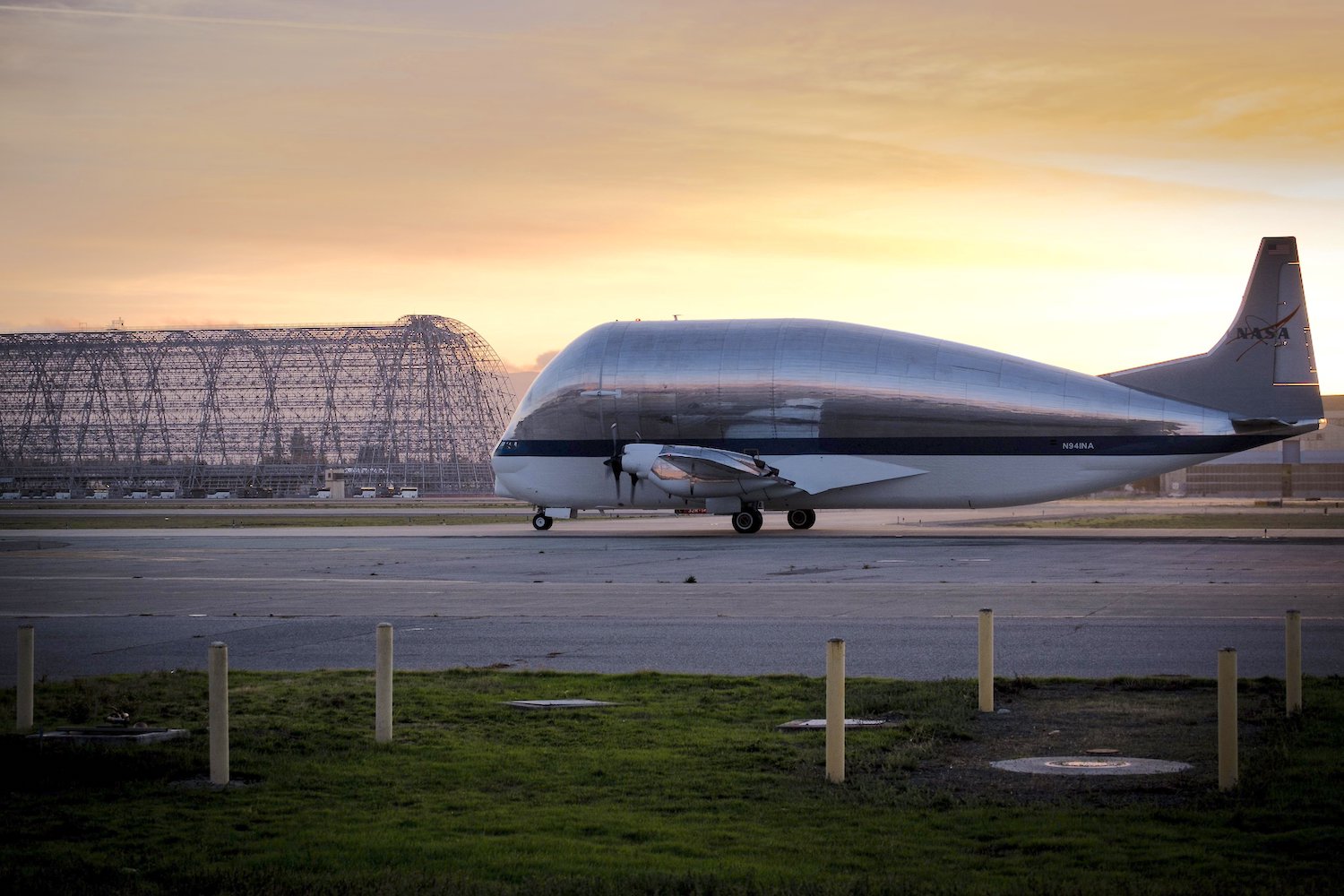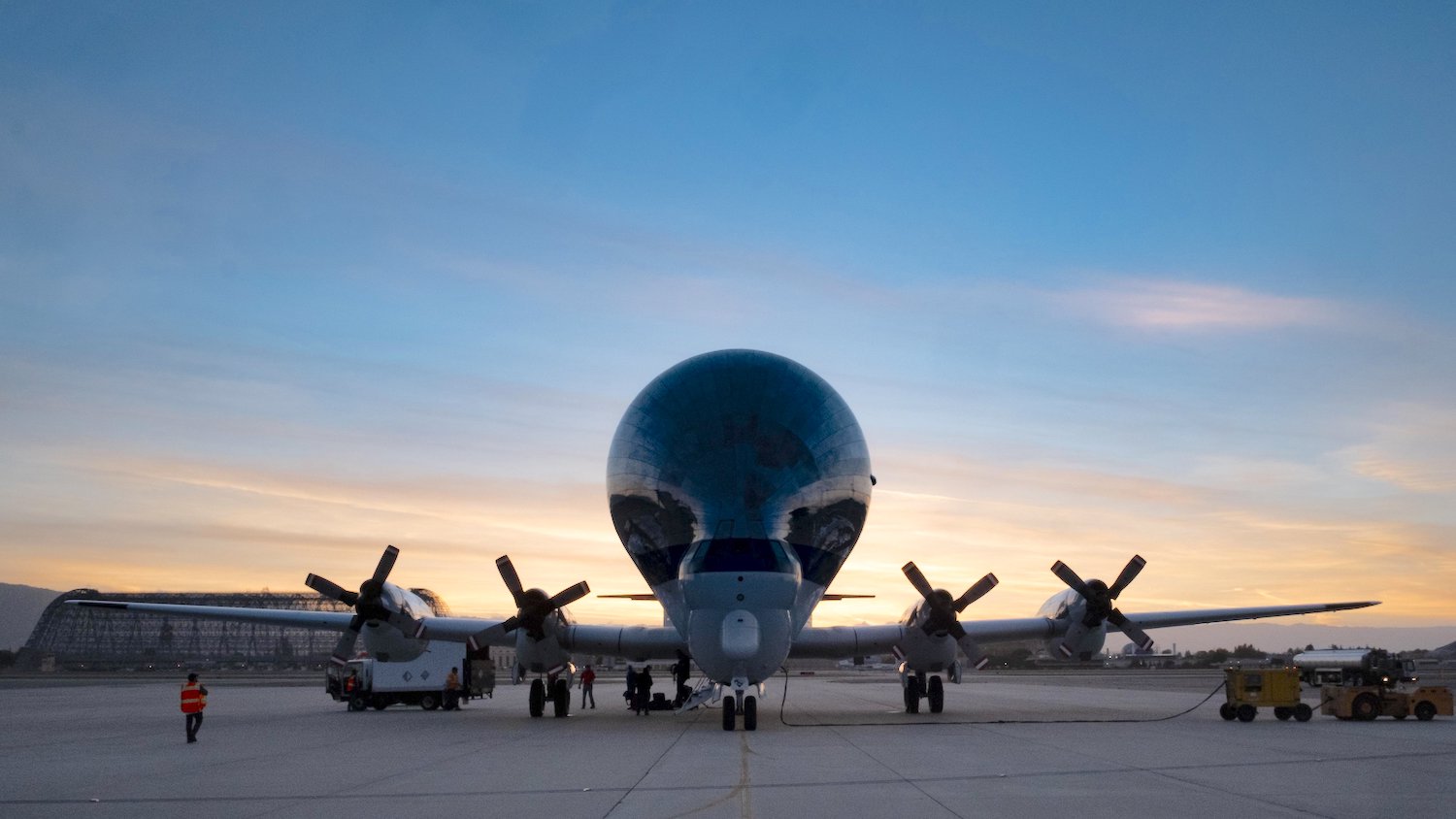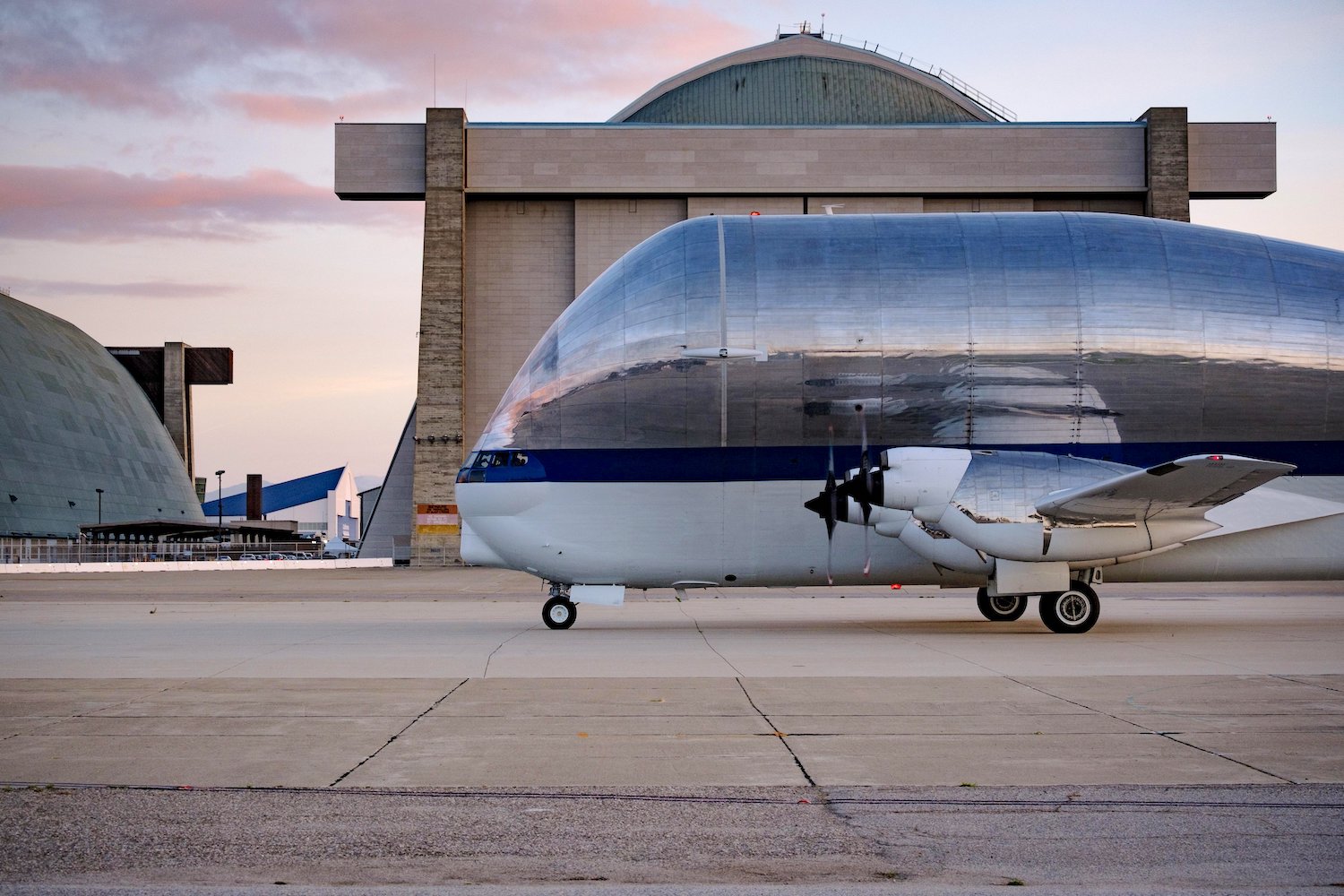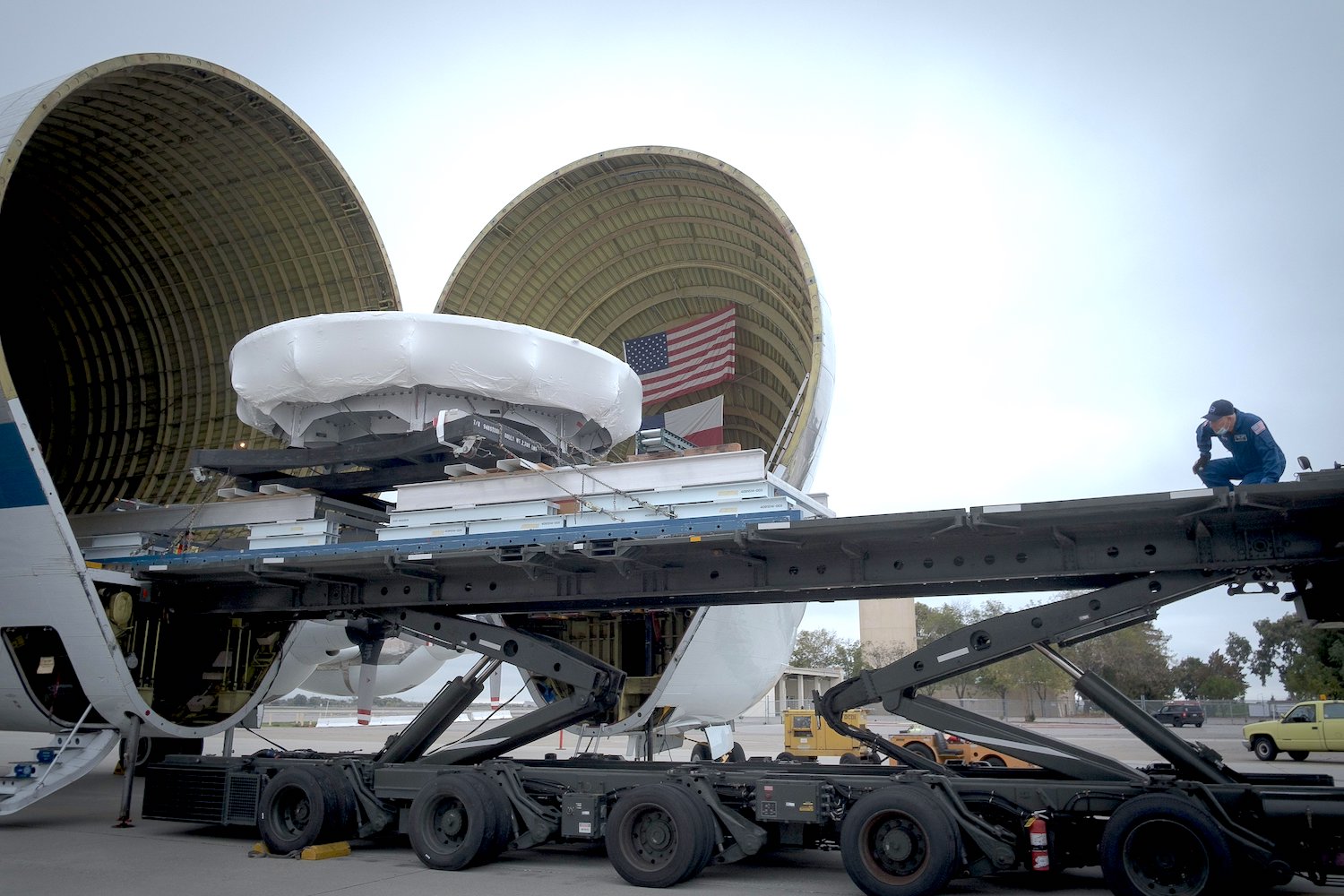NASA’s Super Guppy is one extraordinary-looking aircraft.
The enormous wide-bodied plane is used by the space agency to transport components that are too large to fit on a conventional cargo plane.
The Super Guppy was used to move parts of NASA’s massive Saturn V rocket in preparation for the lunar missions of the late 1960s and early ’70s, and now the aircraft is taking to the skies to assist the upcoming Artemis moon missions.
Its latest flight saw the Super Guppy transport the heat shield skin for Orion, the spacecraft that will fly humans to the moon on Artemis missions that are expected to take place before the end of this decade.
The aircraft landed at Moffett Federal Airfield near San Jose, California, earlier this month. The heat shield skin was transferred to NASA’s Ames Research Center in Silicon Valley, where it’s awaiting the next stage of production.
The space agency this week released images (below) of the Super Guppy shortly after it arrived at the airfield, with one of the photos showing the spacecraft component being removed from the huge cargo compartment that’s accessed near the front of the aircraft.
The original Guppy aircraft, the Pregnant Guppy, was actually a Boeing KC-97 Stratotanker converted by the now-defunct Aero Spacelines company in 1962.
Three years later, Aero Spacelines followed up with the larger and more powerful Super Guppy, which featured a a 25-foot (7.6-meter) diameter cargo bay, and for the first time a hinged nose for more efficient cargo loading.
The final version of the aircraft, the Super Guppy Turbine, first took to the skies in 1970.
With NASA’s original Super Guppy aging fast, the agency purchased a newer one in 1997 from Airbus, which had built two Super Guppy planes after acquiring the manufacturing rights from Aero Spacelines. NASA’s Super Guppy is the only one still flying today.
“Unlike other aircraft, the Super Guppy aircraft has a specially designed hinged nose that opens to an angle of 110 degrees so that cargo can be loaded and unloaded from its belly,” NASA says on its website, adding that the aircraft’s unique shape “also allows it to carry bulky or heavy hardware that would not otherwise fit on traditional aircraft.” Indeed, last year the aircraft transported the an entire Orion spacecraft to the Kennedy Space Center. where it now sits atop NASA’s almighty SLS rocket in preparation for launch.
The agency says that at 16.5 feet (about 5 meters) in diameter, Orion’s heat shield and skin is the largest one ever developed for human spaceflight missions. The shield comprises an underlying titanium skeleton covered by a carbon fiber skin that will protect the spacecraft and its crew from the intense heat generated when the vehicle reenters Earth’s atmosphere at speeds of around 25,000 mph.
This particular shield will be used for the Artemis IV mission, the third crewed trip to the moon.
Orion will undergo its first major test during Artemis I, an uncrewed mission set for 2022 that will involve the spacecraft performing a flyby of the moon before returning to Earth. The voyage will confirm that all of its systems are safe and in proper working order.
Artemis II will see Orion take the same route, though this time with astronauts on board, while Artemis III will attempt to land the first woman and first person of color on the lunar surface.






